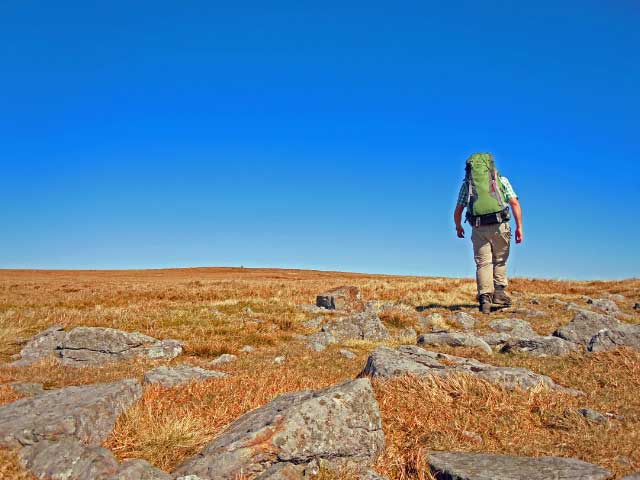The Lightwave Wildtrek is an incredibly light yet sturdy backpack that has just become my new favourite. It is solid and supportive and carries loads of up to about 18kg with ease, yet still weighs about 500g less than most other packs. In other words you get the performance of a full pack with only a bit more weight than in many ultralight packs that are less comfortable to carry and that don’t have similar load-carrying abilities.
The official statistics on the Lightwave Wildtrek 60, the one I got are as follows:
- Capacity : 60 litres
- Load: 9–12 kg (15 kg max)
- Back length: 50 cm or 55 cm
- Weight: 1.48 kg
The pack is divided into upper and lower compartments, with a divider between them. The divider doesn’t open up (my previous pack had a drawstring that let you go into the bottom of the bag from the top) but that doesn’t seem a downside. The divider itself looks fairly waterproof (or at least water-resistant) so my help keep wet stuff away from dry. It is also floppy enough that it can flatten out at the very bottom of the bag, allowing you to fill the top compartment to the full capacity of the entire bag is you prefer to use it as a single compartment bag.
Waterproof zip into lower compartment. Note the floppy divider that can either keep wet and dry stuff separate, or be flattened into the bottom of the bag allowing 1-compartment use.
The bag doesn’t have many wasteful and heavy extras – not like the ones you see with so much webbing they belong on a ship. But it does have a few essentials such as a sleeve for a hydration system. This is accessed from inside the pack rather than from the outside, which I would have preferred. It has a port for the tube and holders on each shoulder strap to allow you to keep the drinking tube out of the way. It also has a few useful pockets. One on top of the lid that can take a waterproof or map. It also has a tiny pocket on the inside of the lid. There is a mesh pocket with velcro closure on the outside of each hip. This was big enough to carry a small camera on one side and a few snacks and pocket knife on the other. Finally on the inside of the waist-belt are two hidden money compartments for flat valuables such as cash or perhaps a credit card.
